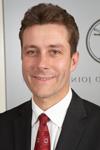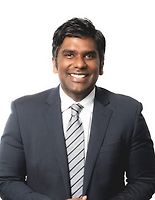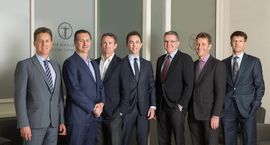Central Auckland, East Auckland, North Auckland, South Auckland, West Auckland > Private Hospitals & Specialists >
Auckland Bone and Joint Surgery
Private Service, Orthopaedics, Spinal
Today
Allevia Hospital Ascot, 90 Green Lane East, Remuera, Auckland
8:30 AM to 5:00 PM.
Description
- shoulder and elbow
- cervical and lumbar spine
- hip and knee
Consultants
Note: Please note below that some people are not available at all locations.
-

Mr Craig Ball
Orthopaedic Surgeon, Shoulder & Elbow Specialist
Available at all locations.
-

Mr Matthew Boyle
Orthopaedic Surgeon, Hip, Knee and Shoulder Specialist
Available at all locations.
-

Mr Mark Clatworthy
Orthopaedic Surgeon, Knee Specialist
Available at all locations.
-

Mr Haemish Crawford
Orthopaedic Surgeon, Hip/Knee Specialist
Available at Allevia Hospital Ascot, 90 Green Lane East, Remuera, Auckland
-

Mr Michael Foster
Orthopaedic Surgeon, Hand, Wrist, Elbow Specialist
Available at all locations.
-

Mr Suren Senthi
Orthopaedic Surgeon, Foot and Ankle Specialist
Available at Allevia Hospital Ascot, 90 Green Lane East, Remuera, Auckland
Referral Expectations
At your appointment, recommendations and options regarding your future treatment plan will be discussed with you.
You need to bring to your appointment:
- Any letters or reports from your doctor or another hospital
- Any X-Rays, CT or MRI films and reports
- All medicines you are currently taking including herbal and natural remedies
- Your pharmaceutical entitlement card
- Your ACC number if appropriate.
Your visit will involve a thorough exam so please bring clothes that allow your spine and joints to be examined whilst maintaining your dignity. A friend or family member may come with you if you wish.
Hours
Allevia Hospital Ascot, 90 Green Lane East, Remuera, Auckland
8:30 AM to 5:00 PM.
| Mon – Thu | 8:30 AM – 5:00 PM |
|---|---|
| Fri | 8:30 AM – 4:30 PM |
Procedures / Treatments
Please click here for patient information on shoulders - what can go wrong and what treatments we can provide.
Please click here for patient information on shoulders - what can go wrong and what treatments we can provide.
Please click here for patient information on shoulders - what can go wrong and what treatments we can provide.
Please click here for information on elbow injuries and their treatment.
Please click here for information on elbow injuries and their treatment.
Please click here for information on elbow injuries and their treatment.
Please click here for information on hip replacement and hip resurfacing.
Please click here for information on hip replacement and hip resurfacing.
Service types: Hip arthroscopy, Hip replacement.
Please click here for information on hip replacement and hip resurfacing.
Please click here for information on knee surgery.
Please click here for information on knee surgery.
Please click here for information on knee surgery.
Please click here for information on spine surgery.
Please click here for information on spine surgery.
Please click here for information on spine surgery.
Please click here for information on hand and wrist surgery.
Please click here for information on hand and wrist surgery.
Please click here for information on hand and wrist surgery.
For elderly patients joint replacement surgery is commonly required to treat damaged joints from wearing out, arthritis or other forms of joint disease including rheumatoid arthritis. In these procedures the damaged joint surface is removed and replaced with artificial surfaces normally made from metal (chromium cobalt alloy, titanium), plastic (high density polyethelene) or ceramic which act as alternate bearing surfaces for the damaged joint. These operations are major procedures which require the patient to be in hospital for several days and followed by a significant period of rehabilitation. The hospital has several ways of approaching the procedure for replacement and the specifics for the procedure will be covered at the time of assessment and booking of surgery. Occasionally blood transfusions are required; if you have some concerns raise this with your surgeon during consultation.
For elderly patients joint replacement surgery is commonly required to treat damaged joints from wearing out, arthritis or other forms of joint disease including rheumatoid arthritis. In these procedures the damaged joint surface is removed and replaced with artificial surfaces normally made from metal (chromium cobalt alloy, titanium), plastic (high density polyethelene) or ceramic which act as alternate bearing surfaces for the damaged joint. These operations are major procedures which require the patient to be in hospital for several days and followed by a significant period of rehabilitation. The hospital has several ways of approaching the procedure for replacement and the specifics for the procedure will be covered at the time of assessment and booking of surgery. Occasionally blood transfusions are required; if you have some concerns raise this with your surgeon during consultation.
For elderly patients joint replacement surgery is commonly required to treat damaged joints from wearing out, arthritis or other forms of joint disease including rheumatoid arthritis. In these procedures the damaged joint surface is removed and replaced with artificial surfaces normally made from metal (chromium cobalt alloy, titanium), plastic (high density polyethelene) or ceramic which act as alternate bearing surfaces for the damaged joint.
These operations are major procedures which require the patient to be in hospital for several days and followed by a significant period of rehabilitation. The hospital has several ways of approaching the procedure for replacement and the specifics for the procedure will be covered at the time of assessment and booking of surgery.
Occasionally blood transfusions are required; if you have some concerns raise this with your surgeon during consultation.
A large number of orthopaedic procedures on joints are performed using an arthroscope, where a fibre optic telescope is used to look inside the joint. Through this type of keyhole surgery, fine instruments can be introduced through small incisions (portals) to allow surgery to be performed without the need for large cuts. This allows many procedures to be performed as a day stay and allows quicker return to normal function of the joint. Arthroscopic surgery is less painful than open surgery and decreases the risk of healing problems. Arthroscopy allows access to parts of the joints which can not be accessed by other types of surgery.
A large number of orthopaedic procedures on joints are performed using an arthroscope, where a fibre optic telescope is used to look inside the joint. Through this type of keyhole surgery, fine instruments can be introduced through small incisions (portals) to allow surgery to be performed without the need for large cuts. This allows many procedures to be performed as a day stay and allows quicker return to normal function of the joint. Arthroscopic surgery is less painful than open surgery and decreases the risk of healing problems. Arthroscopy allows access to parts of the joints which can not be accessed by other types of surgery.
A large number of orthopaedic procedures on joints are performed using an arthroscope, where a fibre optic telescope is used to look inside the joint. Through this type of keyhole surgery, fine instruments can be introduced through small incisions (portals) to allow surgery to be performed without the need for large cuts. This allows many procedures to be performed as a day stay and allows quicker return to normal function of the joint.
Arthroscopic surgery is less painful than open surgery and decreases the risk of healing problems. Arthroscopy allows access to parts of the joints which can not be accessed by other types of surgery.
Osteotomy is the division of a crooked or bent bone to improve alignment of the limb. These procedures normally involve some form of internal fixation, such as rods or plates, or external fixation which involves external wires and pins to hold the bone. The type of procedure for fixation will be explained when the surgery is planned.
Osteotomy is the division of a crooked or bent bone to improve alignment of the limb. These procedures normally involve some form of internal fixation, such as rods or plates, or external fixation which involves external wires and pins to hold the bone. The type of procedure for fixation will be explained when the surgery is planned.
Osteotomy is the division of a crooked or bent bone to improve alignment of the limb.
These procedures normally involve some form of internal fixation, such as rods or plates, or external fixation which involves external wires and pins to hold the bone. The type of procedure for fixation will be explained when the surgery is planned.
In many cases tendons will be lengthened to improve the muscle balance around a joint or tendons will be transferred to give overall better joint function. This occurs in children with neuromuscular conditions but also applies to a number of other conditions. Most of these procedures involve some sort of splintage after the surgery followed by a period of rehabilitation, normally supervised by a physiotherapist.
In many cases tendons will be lengthened to improve the muscle balance around a joint or tendons will be transferred to give overall better joint function. This occurs in children with neuromuscular conditions but also applies to a number of other conditions. Most of these procedures involve some sort of splintage after the surgery followed by a period of rehabilitation, normally supervised by a physiotherapist.
In many cases tendons will be lengthened to improve the muscle balance around a joint or tendons will be transferred to give overall better joint function. This occurs in children with neuromuscular conditions but also applies to a number of other conditions.
Most of these procedures involve some sort of splintage after the surgery followed by a period of rehabilitation, normally supervised by a physiotherapist.
Public Transport
The Auckland Transport website is a good resource to plan your public transport options.
Parking
Free patient parking is provided at all clinic locations.
Website
Contact Details
Allevia Hospital Ascot, 90 Green Lane East, Remuera, Auckland
Central Auckland
8:30 AM to 5:00 PM.
Healthlink EDI
akbonejo
Website
- Mr Craig Ball Ph (09) 520 9631
- Mr Matthew Boyle Ph (09) 281 6733
- Mr Mark Clatworthy Ph (09) 520 9632
- Mr Haemish Crawford Ph (09) 520 9633
- Mr Michael Foster Ph (09) 522 3799
- Mr Suren Senthi Ph 09 520 9558
Email: info@aucklandboneandjoint.co.nz
Ascot Hospital
Level 1
90 Greenlane East
Remuera
Auckland
Street Address
Ascot Hospital
Level 1
90 Greenlane East
Remuera
Auckland
Postal Address
Private Bag 28912
Remuera
Auckland 1541
AUT Millennium, 17 Antares Place, Rosedale, Auckland
North Auckland
Healthlink EDI
akbonejo
Website
Was this page helpful?
This page was last updated at 1:03PM on August 10, 2023. This information is reviewed and edited by Auckland Bone and Joint Surgery.

